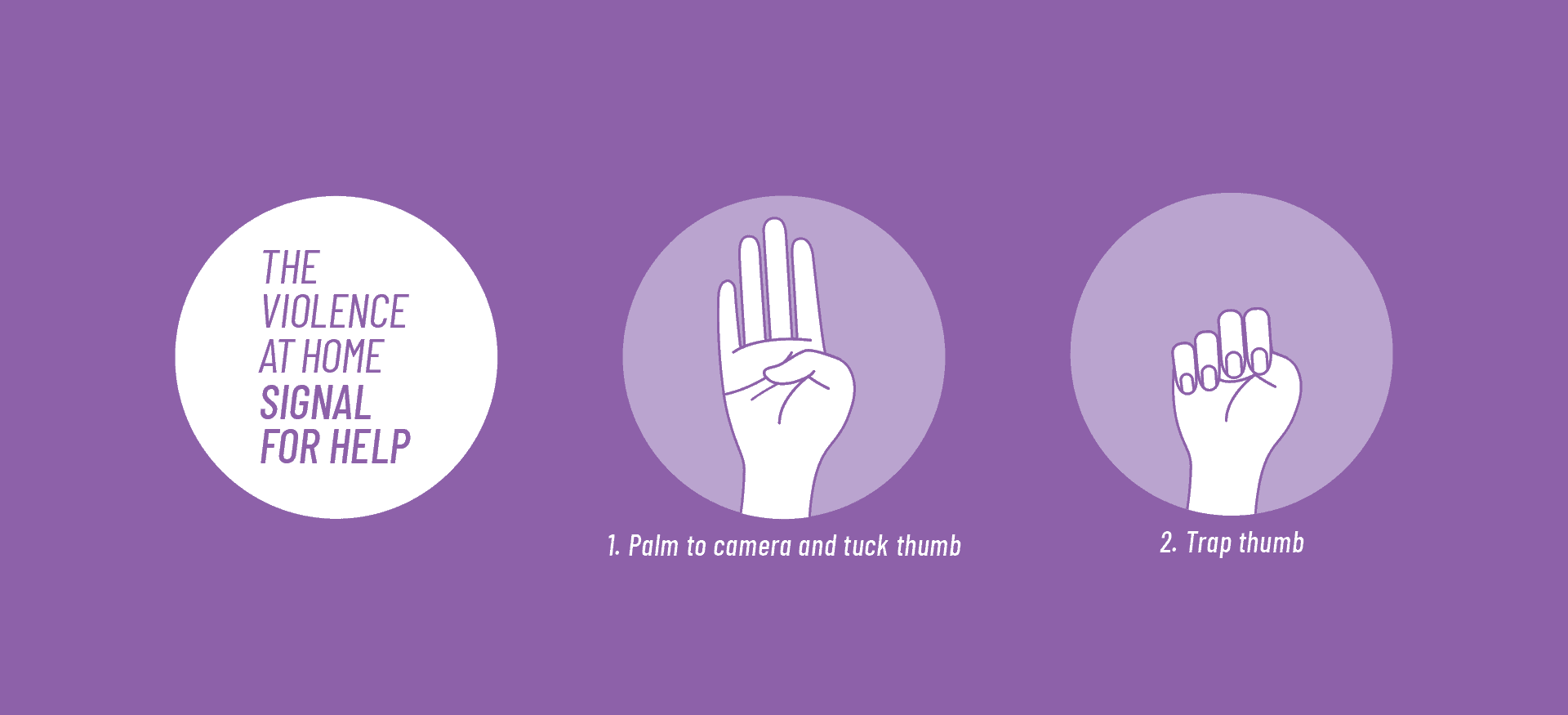Women’s Funds at Work
Getting out of an abusive situation isn’t as easy as some may believe. We know women may stay in harmful situations because they lack the finances to be independent, because they fear having their children taken away, or because their communication is heavily monitored by the abuser that they can’t get help. From our own research here in Allen County, we know some reasons why survivors don’t report: 37% don’t want others to find out what has happened, 44% fear how the perpetrator would respond, and 18% don’t think the police would believe them.
According to the United Nations, domestic violence has increased upwards of 20% as pandemic lockdowns and indefinite remote work schedules have left more people trapped in dangerous environments. As we entered the 2020 shelter-in-place it quickly became apparent that survivors needed a way to ask for help, so the Canadian Women’s Foundation set out on a mission to create a signal that was quick, recognizable, and not easily traceable by a perpetrator. Through collaboration with local nonprofits, service providers, and gender violence advocates, the foundation was able to launch the Violence at Home Signal for Help in April 2020.
The Violence at Home Signal for Help quickly gained international attention, going viral on TikTok. The signal is relatively simple: the palm is faced towards the intended recipient with the thumb tucked, and then the four fingers trap the thumb in the palm. The signal can be used discreetly in person, on a video call, or from a vehicle. As recently as November 2021, a missing teenage girl from North Carolina was discovered after she used the signal from the back window of her abductor’s vehicle.
In the educational tools that have been widely shared and translated into many languages, we are taught what the sign means and what to do when we see it. Not only has this new tool been instrumental in empowering survivors, but it has also created greater understanding and empathy from people who have not experienced these environments for themselves. A key piece of the Signal for Help Campaign has been training people how to safely help someone who is in a dangerous situation. The campaign has provided education on how to ask yes/no questions such as “Would you like me to check in with you directly?” or “Do you need me to call the police?”
By going viral, the Signal for Help helped ignite a broader conversation about why abusive relationships are difficult to leave and the staggering prevalence of sexual assault. The Signal for Help campaign didn’t just teach survivors how to indicate their struggle, it also taught the public how to safely offer support and assistance to those trapped in dangerous environments. This is just one example of the power of a local organization focused on empowering women and girls by convening leading voices on important issues. When we come together to keep women and girls safe, we’re more creative, more innovative, and more informed.
If you see the signal:
Discreetly check in with the person. A simple text message saying, “I’d love to catch up! Call me when you’re free.” or inviting them for a walk in their neighborhood might be safe ways to see what kind of support they need.
Ask yes or no questions, like “Would you like me to look up some services and call you back?” “Is it ok to check in with you directly?”
If it appears that the person is in immediate danger, call 911.
Share This Article!

